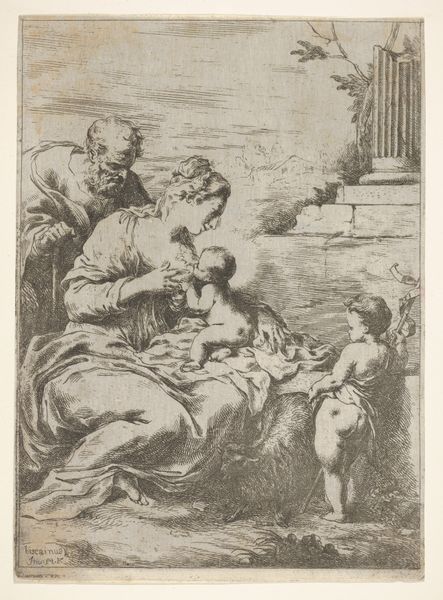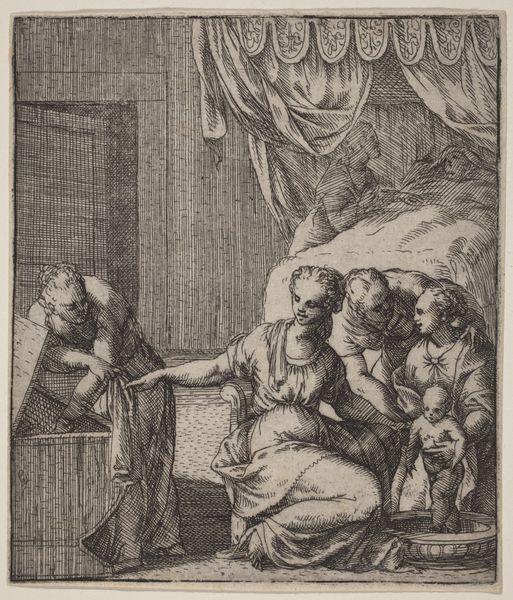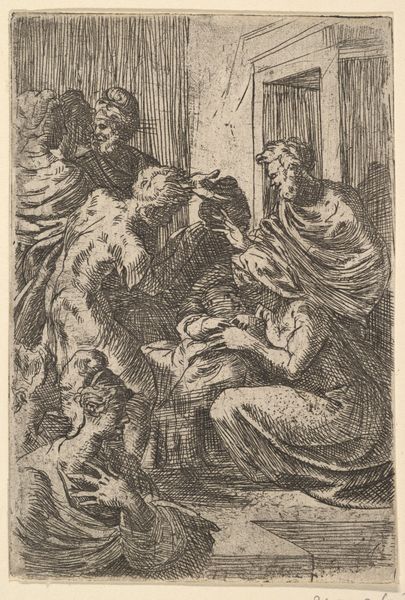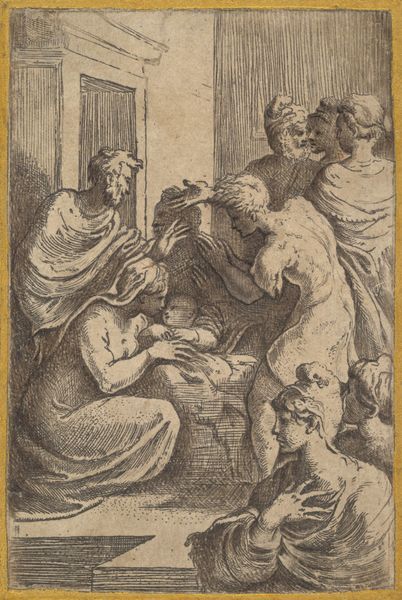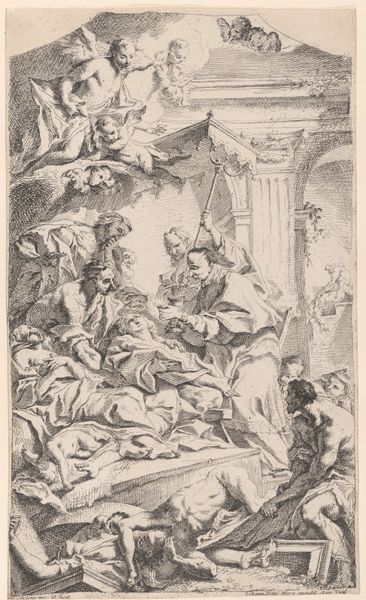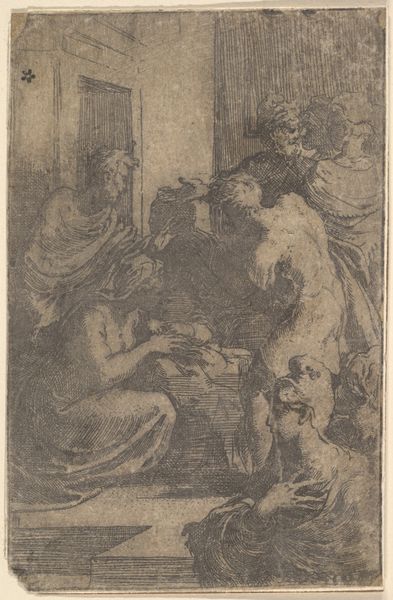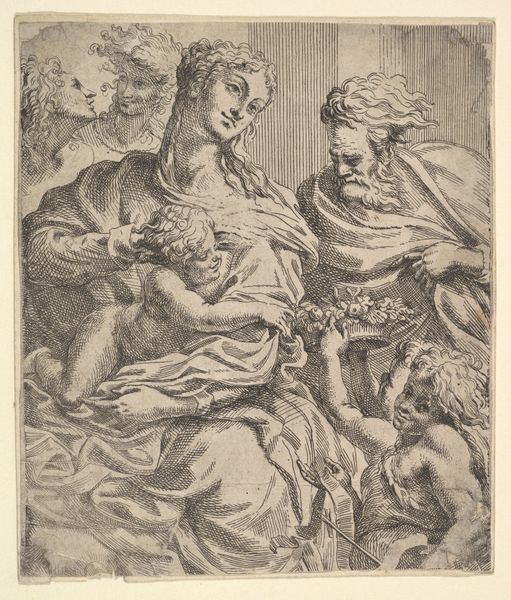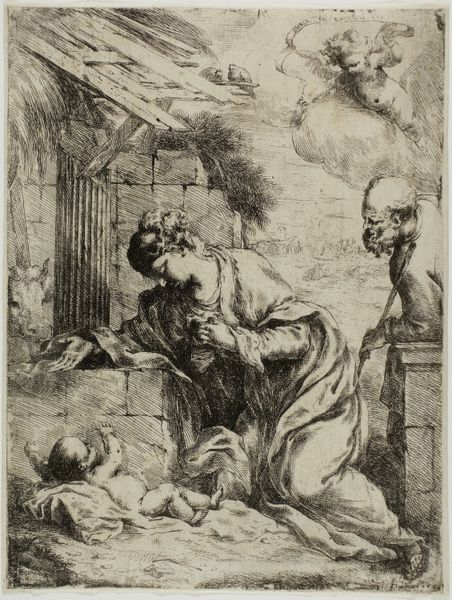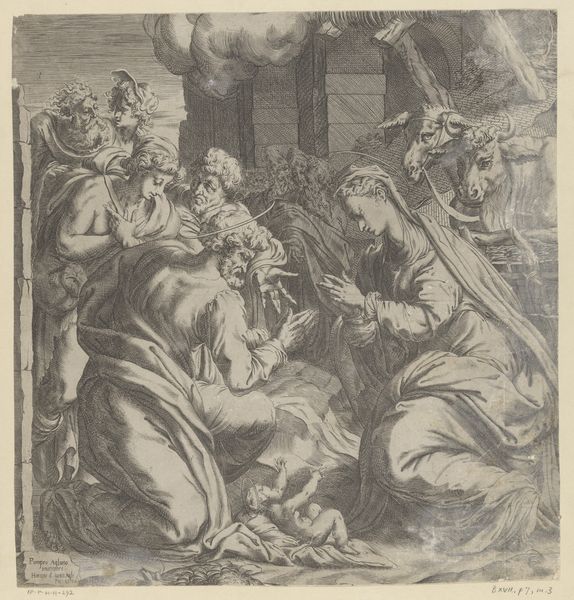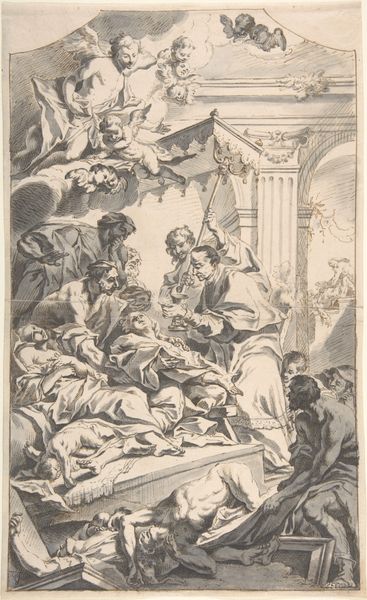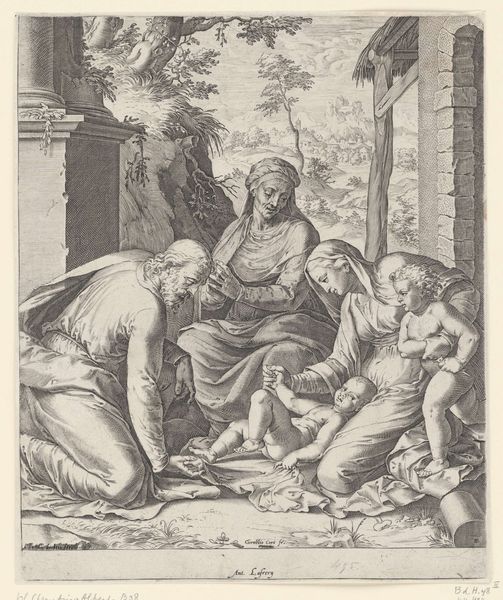
print, etching
#
narrative-art
# print
#
etching
#
figuration
#
history-painting
#
italian-renaissance
Copyright: National Gallery of Art: CC0 1.0
Parmigianino, around the 1520s, etched "The Adoration of the Shepherds," a scene rich with humble reverence. The shepherds gathered around the newborn Christ, kneeling, heads bowed, offering not riches but their heartfelt adoration. The gesture of kneeling, ubiquitous across epochs, echoes in ancient reliefs before kings and gods, and persists in modern acts of supplication. Think of Egyptian hieroglyphs, where kneeling signifies respect and submission to divine authority. It’s an attitude deeply embedded in our collective memory. This posture, however, morphs through time. Initially a symbol of subservience, it evolves, taking on nuances of reverence, as seen here. Such emotional transfer is not merely learned but felt—a subconscious recognition of profound moments. Like the serpent, the act of kneeling sheds its skin, revealing new layers of meaning with each retelling. The emotions it conveys— humility, awe, devotion—remain potent, engaging us on a visceral level, perpetuating the cyclical dance of symbols across cultures and centuries.
Comments
No comments
Be the first to comment and join the conversation on the ultimate creative platform.
